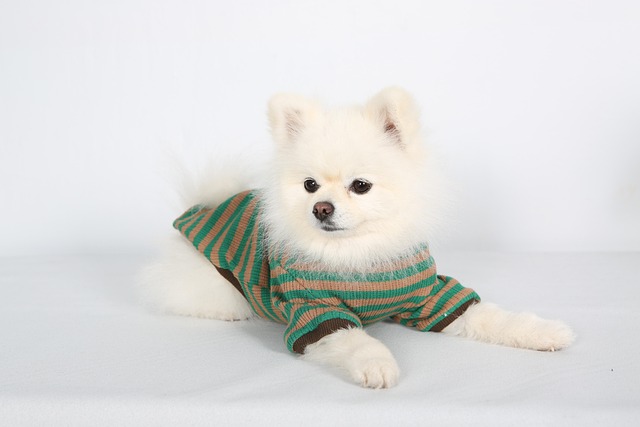
What vitamin is good for dogs' skin
Seeing your dog constantly scratch or noticing dry, flaky skin can make you wonder if a simple vitamin might be the solution.
If you’re a new dog parent to a 15-year-old pup in the US—maybe you’re sitting on your Arizona apartment floor, holding a spoonful of kibble while your senior Chihuahua, Lua, sniffs it and walks away, or you’ve noticed she’s lost a little weight and takes longer to finish meals—you’ve probably worried: Is she getting enough nutrition? What food will keep her comfortable and healthy? A 15-year-old dog is in their “golden golden years”—their bodies need extra gentleness, and the right food can make mealtime enjoyable again while supporting their aging needs. Let’s break this down so you can feed Lua with confidence.
First, let’s keep the science simple: At 15, your dog’s body works slower than it used to. Their teeth might be worn or sore (so hard kibble hurts), their digestion is more sensitive (spicy or rich foods cause upset tummies), and they need fewer calories (but more nutrient-dense ones) to avoid weight loss or gain. Unlike younger senior dogs (7–10 years), 15-year-olds often need food tailored to “geriatric” needs—softer textures, easy-to-digest proteins, and added nutrients for kidney and heart health. My friend Lisa in Texas learned this with her 15-year-old Shih Tzu, Max: Max stopped eating regular senior kibble until Lisa switched to a soft, geriatric formula with chicken (his favorite!)—now he licks his bowl clean, and his vet said his energy has improved. It’s not about “more” food—it’s about “right” food.

Here’s how to choose what to feed your 15-year-old dog, step by step: Start with a vet visit—always ask your vet first. They’ll check for issues like dental pain, kidney disease, or diabetes (common in 15-year-olds) and recommend a diet (prescription if needed). If teeth are sore, pick soft or wet geriatric food—you can even warm it slightly (not hot!) to make it smell better and easier to chew. Look for formulas with high-quality, lean protein (chicken, turkey) and added omega-3s (for joint and brain health). For apartment living, stick to small, frequent meals (3–4 tiny portions a day) instead of 2 big ones—this eases digestion and keeps them from getting too tired at mealtime. Use positive reinforcement to make eating fun: Hold a small bite of food, say “yum, Lua!” in a cheerful voice, and praise her when she takes it—never force her to eat or scold her for slow eating (punishment goes against US animal welfare norms and makes mealtime stressful).
Now, let’s tie in rules and habits that matter. Every US state requires core vaccines (distemper, parvovirus)—even 15-year-olds need updated shots; skipping them could get you fined $150+ in California or New York, and a nutrient-rich diet helps their weakening immune system respond better to vaccines. When you take them for short walks (gentle exercise aids digestion), always clean up their poop—cities from Seattle to Boston fine up to $300 for leaving waste, and their stool tells you if the food works (firm, consistent poop means it’s a good fit). For apartment living, avoid giving table scraps (even a bite of bacon can upset their sensitive gut) and keep fresh water in a shallow bowl (senior dogs struggle with deep bowls). At the dog park (if they have energy), bring a tiny bag of their geriatric food for snacks instead of treats—It keeps their diet consistent and avoids stomach upsets. If they skip 2+ meals, call your vet—loss of appetite in 15-year-olds needs quick attention.
Feeding a 15-year-old dog is about kindness and observation. With vet guidance, soft, nutrient-dense food, and gentle mealtime habits, you’ll help your pup enjoy every bite. Before you know it, Lua will be waiting by her bowl at mealtime, happy to savor her food—and you’ll have peace of mind knowing you’re supporting her in her later years. Remember: It’s not about perfection—it’s about making her comfortable.

Seeing your dog constantly scratch or noticing dry, flaky skin can make you wonder if a simple vitamin might be the solution.

If you’re a new dog parent in the US—maybe you’re sitting on your Portland apartment couch, staring at your 1-year-old Australian Shepherd

If you’re a new dog parent in the US—maybe you’re sitting on your Atlanta apartment floor, holding your 6-week-old Beagle puppy, Daisy, who’s curled up in your lap

If you’re a new dog parent in the US—maybe you’re standing in your Denver apartment’s kitchen, staring at a bag of high-quality puppy kibble and a bottle

Seeing your puppy grow daily is amazing, and it’s natural to want to give them every advantage, including supplements.

Brown stains on white dog fur aren’t just unsightly—they can also hint at underlying issues like tear duct irritation or poor grooming habits, which matter even more when you’re following local pet care laws.